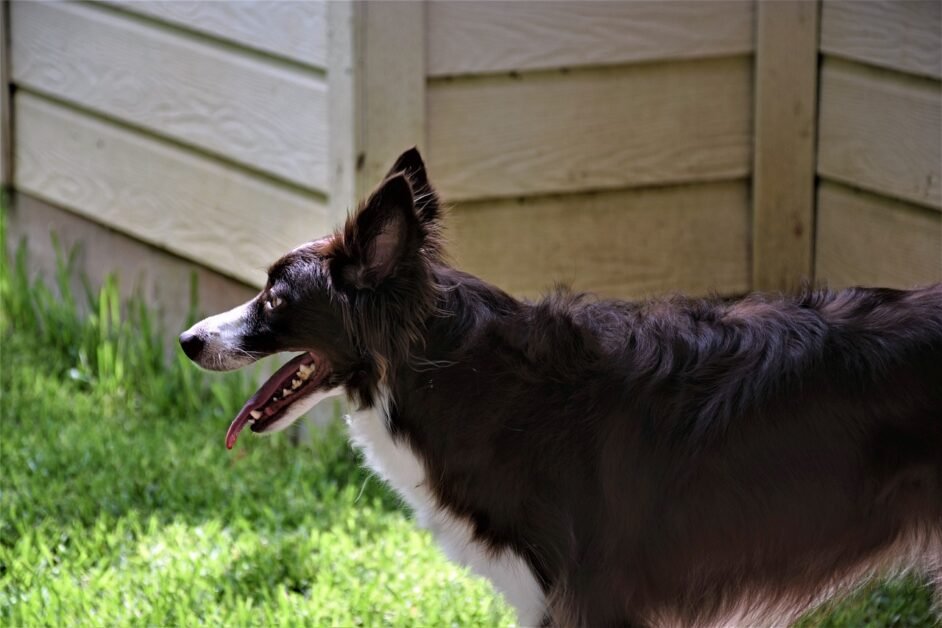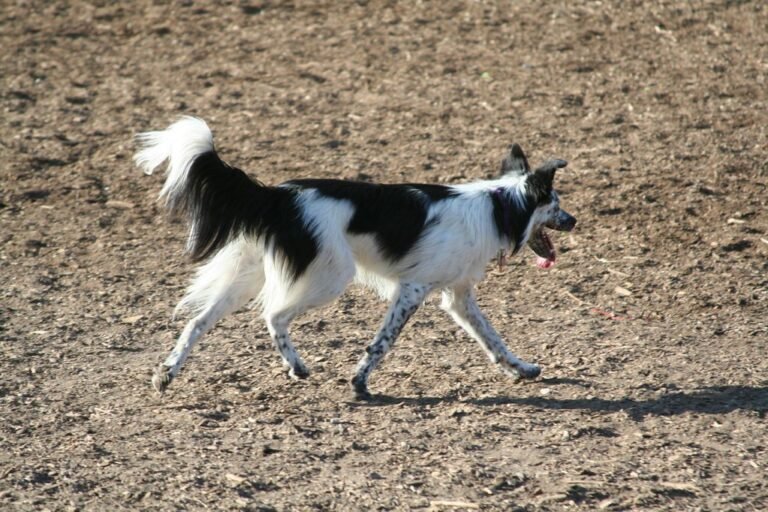From Chaos to Control: How to Train Your Border Collie Puppy
The Border Collie is a highly intelligent and energetic breed known for its herding abilities. They are often regarded as one of the most intelligent dog breeds and require a lot of mental and physical stimulation to thrive. Understanding their traits and characteristics is crucial for providing them with the appropriate care and training they need.
Understanding the Border Collie Breed: Traits and Characteristics
Border Collies are known for their high energy levels and exercise needs. They have been bred for centuries to work long hours herding livestock, so they have a natural instinct to be active. Without enough exercise, they can become bored and develop behavioral issues such as excessive barking or destructive chewing.
Intelligence is another prominent trait of the Border Collie breed. They are quick learners and excel in obedience training and agility competitions. However, their intelligence can also make them prone to boredom if not mentally stimulated. Providing them with puzzle toys, interactive games, and training sessions can help keep their minds engaged.
Border Collies have strong herding instincts, which can manifest in potential behavior issues. They may try to herd children, other pets, or even cars. It’s important to redirect this behavior through proper training and socialization. Without proper guidance, their herding instincts can lead to nipping or chasing behaviors.
Setting Up a Safe and Stimulating Environment for Your Puppy
Puppy-proofing your home is essential to ensure the safety of your Border Collie puppy. Remove any potential hazards such as toxic plants, electrical cords, or small objects that could be swallowed. Secure cabinets and trash cans to prevent access to harmful substances or choking hazards.
Providing toys and activities for mental stimulation is crucial for a Border Collie puppy’s development. Puzzle toys that require problem-solving skills can keep them entertained and mentally engaged. Interactive games such as hide-and-seek or fetch can also provide mental stimulation while bonding with your puppy.
Creating a designated space for your puppy can help them feel secure and provide them with a sense of their own territory. This can be a crate or a specific area in your home where they have their bed, toys, and water bowl. Having a designated space can also aid in house training and establishing boundaries.
Establishing a Consistent Routine for Training and Exercise
Consistency is key when it comes to training a Border Collie puppy. They thrive on routine and structure, so it’s important to establish consistent rules and expectations from the beginning. Use positive reinforcement techniques to reward good behavior and redirect unwanted behaviors.
Scheduling regular exercise and playtime is crucial for a Border Collie’s well-being. Aim for at least an hour of physical activity every day, which can include walks, runs, or playing fetch. Mental stimulation through training sessions or interactive games should also be incorporated into their daily routine.
Incorporating training into daily routines can help reinforce desired behaviors. For example, ask your puppy to sit before mealtime or wait at the door before going outside. By integrating training into everyday activities, you are reinforcing their training consistently and making it a natural part of their routine.
Positive Reinforcement Techniques: Rewards and Treats for Good Behavior
Positive reinforcement is an effective training method for Border Collies. It involves rewarding your puppy for good behavior with treats, praise, or playtime. This method encourages them to repeat the desired behavior and strengthens the bond between you and your puppy.
Choosing appropriate rewards and treats is important to ensure your puppy stays motivated during training sessions. Use high-value treats that your puppy finds particularly enticing, such as small pieces of cooked chicken or cheese. Experiment with different treats to find what works best for your puppy.
Timing and consistency are crucial when using positive reinforcement techniques. The reward should be given immediately after the desired behavior occurs so that your puppy can make the connection between the behavior and the reward. Consistency in rewarding good behavior helps reinforce the desired behavior and makes it more likely to be repeated.
Socializing Your Border Collie Puppy: Introducing to People and Other Animals
Socialization is essential for a well-adjusted Border Collie. It helps them develop confidence, learn appropriate behavior, and become comfortable in various environments. Introduce your puppy to new people, animals, and experiences gradually and in a positive manner.
When introducing your puppy to new people, allow them to approach your puppy calmly and gently. Encourage your puppy to interact with them by offering treats or praise. Gradually expose your puppy to different types of people, including children, men, women, and people wearing hats or glasses.
Introducing your puppy to other animals should be done slowly and under controlled circumstances. Start with calm and friendly dogs in a neutral territory, such as a park or a friend’s backyard. Monitor their interactions closely and intervene if any signs of aggression or fear are displayed.
Basic Commands: Sit, Stay, Come, and Down
Teaching basic commands is an important part of training a Border Collie puppy. These commands provide the foundation for obedience and control. Here are step-by-step instructions for teaching each command:
1. Sit: Hold a treat close to your puppy’s nose and slowly move it upwards. As their head follows the treat, their bottom will naturally lower into a sitting position. Once they are sitting, say “sit” and give them the treat.
2. Stay: Start with your puppy in a sitting position. Hold your hand up like a stop sign and say “stay.” Take a step back and wait for a few seconds before returning to your puppy and giving them a treat. Gradually increase the distance and duration of the stay.
3. Come: Start in a secure area with minimal distractions. Crouch down, open your arms, and say “come” in an enthusiastic tone. When your puppy comes to you, reward them with praise and a treat. Gradually increase the distance and distractions.
4. Down: Start with your puppy in a sitting position. Hold a treat in your closed fist and place it near their nose. Slowly lower your hand to the ground, allowing them to follow the treat with their nose. As they lower their body to reach the treat, say “down” and give them the treat.
Reinforce and practice these commands regularly in different environments and with increasing distractions to ensure your puppy’s obedience.
Advanced Commands: Heel, Leave It, and Off
Building on the basic commands, advanced commands provide further control and safety for your Border Collie. Here are some important advanced commands to teach:
1. Heel: Start with your puppy on a leash and hold it close to your side. Begin walking and say “heel.” If your puppy starts to pull or stray away, stop walking and wait for them to return to your side. Reward them with praise and continue walking.
2. Leave It: Hold a treat in your closed fist and present it to your puppy. Say “leave it” and wait for them to lose interest in the treat. Once they do, reward them with a different treat or praise. Gradually increase the difficulty by using more tempting items.
3. Off: Teach your puppy to keep all four paws on the ground when greeting people or jumping on furniture. When they jump up, turn away from them and say “off.” Wait for them to have all four paws on the ground before giving them attention or praise.
Training tips and techniques for advanced commands include breaking down the command into smaller steps, using positive reinforcement, and practicing in different environments with increasing distractions.
Leash Training and Walking Your Border Collie Puppy
Leash training is crucial for the safety and control of your Border Collie puppy. Here are step-by-step instructions for leash training:
1. Start by introducing your puppy to the leash and collar in a positive manner. Allow them to sniff and investigate the leash before attaching it to their collar.
2. Begin by walking in a quiet and familiar area with minimal distractions. Hold the leash loosely and encourage your puppy to walk beside you. Use treats or praise to reward them for walking nicely on the leash.
3. If your puppy pulls on the leash, stop walking and wait for them to return to your side. Reward them with praise or treats when they do. Repeat this process consistently until your puppy learns to walk calmly on the leash.
Tips for successful walks with your puppy include using a comfortable and properly fitted harness or collar, using a retractable leash for more freedom, and gradually increasing the duration and difficulty of walks as your puppy grows.
Crate Training: Benefits and Tips for Success
Crate training is a valuable tool for house training and providing a safe space for your Border Collie puppy. Here are some benefits of crate training:
1. Provides a safe space: A crate can serve as a den-like space where your puppy can feel secure and relaxed.
2. Aids in house training: Dogs naturally avoid soiling their sleeping area, so crate training can help with house training by teaching them to hold their bladder and bowels.
3. Prevents destructive behavior: Crating your puppy when you are unable to supervise them can prevent them from engaging in destructive chewing or other unwanted behaviors.
To successfully crate train your Border Collie puppy, follow these steps:
1. Introduce the crate gradually by leaving the door open and placing treats or toys inside to encourage exploration.
2. Feed your puppy their meals inside the crate to create positive associations.
3. Start closing the door for short periods while you are present, gradually increasing the duration.
4. Never use the crate as a form of punishment. It should always be a positive and safe space for your puppy.
Avoid common mistakes such as leaving your puppy in the crate for too long, using the crate as a form of punishment, or forcing your puppy into the crate.
Addressing Common Behavior Issues: Biting, Chewing, and Digging
Border Collie puppies, like any other breed, may exhibit common behavior issues such as biting, chewing, and digging. Understanding the reasons behind these behaviors and addressing them appropriately is crucial.
Biting is a natural behavior for puppies as they explore their environment and interact with their littermates. However, it’s important to teach them bite inhibition and redirect their biting onto appropriate toys. Provide plenty of chew toys and discourage biting on hands or clothing.
Chewing is another common behavior issue in puppies. It helps relieve teething discomfort and keeps their jaws strong. Provide appropriate chew toys and discourage chewing on furniture or other household items by redirecting their attention to the toys.
Digging is a natural instinct for many dogs, including Border Collies. They may dig to find a cool spot to lie down or to bury toys or bones. Provide a designated digging area in your yard with loose soil or sand where your puppy can dig freely. Encourage them to use this area by burying toys or treats.
Consistency and positive reinforcement are key when addressing these behavior issues. Redirect your puppy’s attention to appropriate toys or activities, reward good behavior, and provide plenty of mental and physical stimulation to prevent boredom.
Continuing Education: Agility Training and Other Activities for Mental Stimulation
Border Collies thrive on mental stimulation, so continuing their education beyond basic obedience training is important. Agility training is an excellent activity for Border Collies as it combines physical exercise with mental challenges.
Agility training involves navigating through an obstacle course consisting of jumps, tunnels, weave poles, and other challenges. It requires focus, obedience, and problem-solving skills. Participating in agility competitions or classes can provide your Border Collie with a fun and challenging outlet for their energy.
Other activities that can provide mental stimulation for Border Collies include scent work, flyball, and obedience trials. These activities tap into their natural instincts and provide an opportunity for them to use their intelligence and problem-solving skills.
Tips for finding and participating in activities with your dog include researching local training facilities or clubs that offer these activities, attending workshops or seminars to learn more about specific activities, and practicing regularly to improve your skills together.
Training and caring for a Border Collie puppy requires understanding their unique traits and characteristics. Their high energy levels, intelligence, and herding instincts make them a special breed that requires plenty of mental and physical stimulation.
By setting up a safe and stimulating environment, establishing a consistent routine, using positive reinforcement techniques, socializing your puppy, teaching basic and advanced commands, leash training, crate training, addressing behavior issues, and continuing their education through activities such as agility training, you can provide your Border Collie puppy with the care and training they need to thrive.
Remember to be patient, consistent, and positive throughout the training process. With time and effort, you will develop a strong bond with your Border Collie puppy and enjoy a well-behaved and happy companion.








